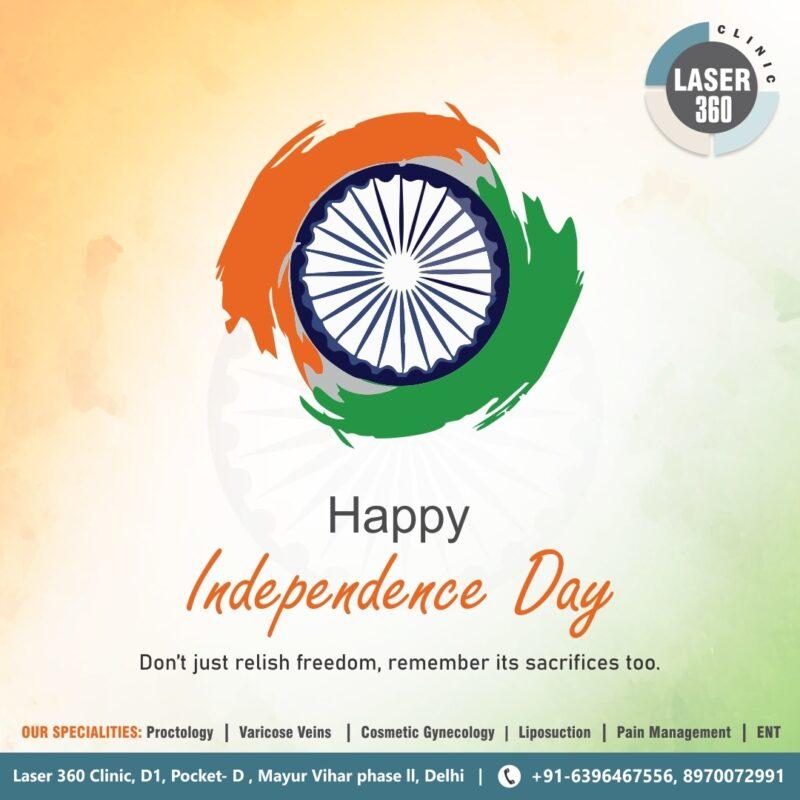Independence Day is celebrated on August 15, to mark the end of British rule in 1947 and the establishment of a free and independent Indian nation. It is the date in 1947 when the Indian Independence Act came into effect, which established that no longer Indians will be under British imperialist rule.
The British East India Company first came to India in 1617 to ease trade between Mughal India and England. In the year 1757, British rule began in India following the British victory at the Battle of Plassey.
From then, the English East India Company started exercising control over the country. By the 1850s, they had almost total control of the country, and they ruled India for 198 years. India fought many battles against British rule to bring back the freedom of the country.
Day of Independence
After 200 years of British rule, India officially gained its independence on August 15, 1947. On this day, Jawaharlal Nehru, the first prime minister of independent India, hoisted the Indian national flag and addressed the nation, marking the start of an Independent India that continues today.
Independence Day is celebrated through festivities across India. Across the country, citizens of India celebrate Independence Day to commemorate the Independence of India from British rule. It also reminds us of the sacrifices made by the freedom fighters to protect the freedom of the country.
Symbol of Honor
Although celebrations take place throughout the country, Delhi, the capital city of India that serves as a political center, is the main area for Independence Day festivities.
The Prime Minister of the country hoists the national flag and sings the national anthem. The Indian armed forces and paramilitary lead a march past and pay a general salute to the Prime Minister. In honor of the solemn occasion, twenty-one gunshots are fired.
The Prime Minister then pays tribute to the leaders of the Indian independence movement in his speech. To remind the struggle of the freedom fighter, the prime minister addresses the nation and ends the speech with a note about the country’s future.
On this day, a special Beating Retreat ceremony was held at the Wagah Border in Amritsar, where sword fighting and cultural dance, formal closing of the gate, a parade, and a flag hoisting ceremony were held.
Series of Events
A series of events are held in every state of the country. The chief minister of each state does the same celebration as it happens in the capital of the country. Among every citizen of the country, this day is marked with a whirlwind of celebrations. The school children perform in front of the Chief Minister.
Throughout the country, flag hoisting ceremonies and cultural programs take place in governmental and non-governmental institutions that capture India’s diversity. Patriotic songs are played through loudspeakers all day to symbolize allegiance to the country. The parades and pageants showcase the scenes of the struggle of the freedom fighter and varied cultural events and traditions of India.
Kite flying is considered to be the main festivity of the day, as it marks a spirit of freedom and joy. The sky is filled with kites of different shapes, sizes, and colors. It has also become a tradition because it is associated with a historical event. As a mark of protest, Indian revolutionaries and freedom fighters flew kites in 1927 with the slogan ‘Go Back, Simon’.
Over time, the celebration has evolved from nationalism to a broader celebration of everything in India.
Current Scenario
Since last year, 2020, due to the ongoing coronavirus epidemic situation, the central authorities have not allowed any social gatherings. Instead, all state and government offices have been asked to webcast their events and celebrations.
To follow the protocols of the authorities, there will be no big performance. Even the gatherings at the Red Fort, where flags are hoisted every Independence Day, will be limited.



